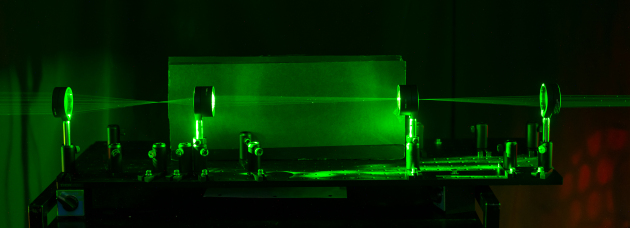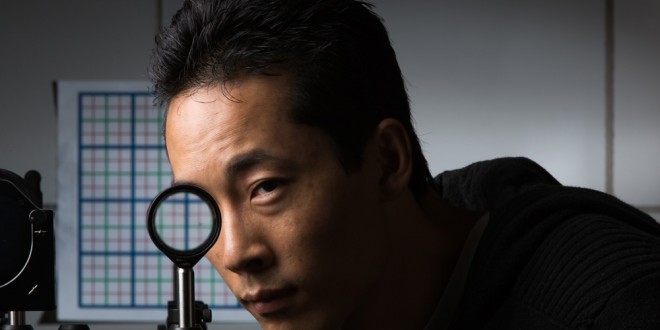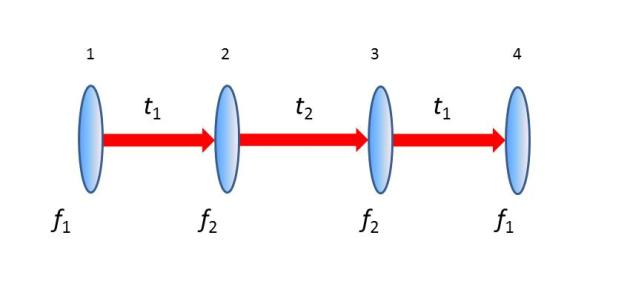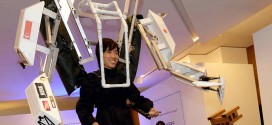We had talked about an invisibility cloak earlier, developed by researchers at Rive University. The invisibility cloak they developed uses grids of nanoscopic rods that create fine-tuned vivid colors and polarize light at the same time. The researchers used the camouflage techniques of squids in order to create the panels that can be used as displays as well. This type of invisibility cloak would take up a fair amount of time and funding in order to make, though. Researchers at Rochester University might have found a cheaper alternative.

The invisibility cloak, as seen on Harry Potter, is certainly not available yet, but it seems that more and more scientists are taking up interest in the project. The researchers at Rochester university thought that why shouldn’t they use the most available technology to try and reproduce the invisibility cloak? They had thought that by using plain old lenses, they could reproduce the invisibility cloak effect, albeit for smaller areas or objects.
Easier said than done, you might be thinking. It seems that the students and researchers at the university relied on accurate math in order to develop the Rochester invisibility cloak. The best part of their project is that they use inexpensive and readily available technology in order to create the invisibility cloak effect. They used four lenses in order to create a doughnut-size field of view which would render anything passing in front of the lenses invisible to those looking through the other side.
The main idea behind the project is to develop an invisibility cloak that would support different viewing angles and still keep items invisible. They also thought about how other devices tend to change the backgrounds of the items they were trying to make invisible, making it obvious that some kind of optical illusion or light-manipulation was going on, which would render the whole device unusable.
The team at Rochester University calculated the exact angles, lens configurations, distances, power and lens types needed in order to reach an accurate invisibility cloak effect. The team managed to create a simple device that actually works as a scope that turns things on one side invisible to the onlooker on the other side. If you look through the Rochester invisibility cloak, and even move around and change your viewing angles, the object that is supposed to be invisible remains invisible, and the background shifts accordingly, as if nothing unusual was happening.
Even though the invisibility cloak is in its first stages of development, the setup is very simple and the team says that it will be further developed to allow wider and further viewing angles. Ultimately, the lenses don’t act as an invisibility cloak, rather like a see-through beam, if I may. Practical uses for this kind of “invisibility cloak” would include medical uses such as a surgeon being able to see through their own hands in order to perform more accurate surgery.
Actually, the best part of the Rochester invisibility cloak is that you can do it yourself, if you have a bit of extra cash, time and concentration lying around. It’s not as easy as you would think it was, because you do need advanced physics and optics knowledge in order to create a working replica of the Rochester invisibility cloak, but it’s worth a try. Here are the steps you need to follow, as provided by the University of Rochester:
1. Buy two sets of 2 lenses with different focal lengths, 2 with f1 focal length and 2 with f2 focal length
2. Separate the first 2 lenses by the sum of their focal lengths, as shown in the picture below, and do the same with the last 2 lenses (f1 lens is the first lens, f2 is the 2nd lens, and they are separated by t1=f1+ f2)
3. Separate the two sets by t2=2 f2 (f1+ f2) / (f1— f2) apart, so that the two f2 lenses are t2 apart
If you try to set up your own Rochester invisibility cloak, let us know how it went and whether it actually worked as well for you as it did for the researchers at the university. Do you think this type of invisibility cloak will catch on? Do you think it will be used in the medical field or while driving, soon or do you think it’s too much of a limited technology?
 Load the Game Video Games, Reviews, Game News, Game Reviews & Game Video Trailers
Load the Game Video Games, Reviews, Game News, Game Reviews & Game Video Trailers




